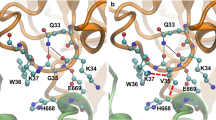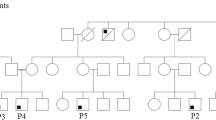Abstract
Background
Recombination-activating gene (RAG) 1 and 2 deficiency is seen in patients with severe combined immunodeficiency (SCID) and Omenn syndrome. However, the spectrum of the disease has recently expanded to include a milder phenotype.
Objective
We analyzed a 4-year-old boy who was initially given the diagnosis of selective immunoglobulin A deficiency (SIgAD) based on immunoglobulin serum levels without any opportunistic infections, rashes, hepatosplenomegaly, autoimmunity or granulomas. The patient was found to be infected with varicella zoster; however, the clinical course was not serious. He produced antiviral antibodies.
Methods
We performed lymphocyte phenotyping, quantification of T cell receptor excision circles (TRECs) and kappa deleting recombination excision circles (KRECs), an analysis of target sequences of RAG1 and 2, a whole-genome SNP array, an in vitro V(D)J recombination assay, a spectratype analysis of the CDR3 region and a flow cytometric analysis of the bone marrow.
Results
Lymphocyte phenotyping demonstrated that the ratio of CD4+ to CD8+ T cells was inverted and the majority of CD4+T cells expressed CD45RO antigens in addition to the almost complete lack of B cells. Furthermore, both TRECs and KRECs were absent. Targeted DNA sequencing and SNP array revealed that the patient carried a deletion of RAG1 and RAG2 genes on the paternally-derived chromosome 11, and two maternally-derived novel RAG1 missense mutations (E455K, R764H). In vitro analysis of recombination activity showed that both RAG1 mutant proteins had low, but residual function.
Conclusions
The current case further expands the phenotypic spectrum of mild presentations of RAG deficiency, and suggests that TRECs and KRECs are useful markers for detecting hidden severe, as well as mild, cases.



Similar content being viewed by others
Abbreviations
- RAG:
-
Recombination-activating gene
- SCID:
-
Severe combined immunodeficiency
- SIgAD:
-
Selective immunoglobulin A deficiency
- TRECs:
-
T cell receptor excision circles
- sjKRECs:
-
signal joint immunoglobulin kappa deleting recombination excision circles
- cjKRECs:
-
coding joint immunoglobulin kappa deleting recombination excision circles
- PID:
-
Primary immunodeficiency
- RAGD:
-
RAG deficiency
- CVID:
-
Common variable immunodeficiency
- BMT:
-
Bone marrow transplantation
- LOH:
-
Loss of heterozygosity
- GFP:
-
Green fluorescent protein
- BM:
-
Bone marrow
- TCR:
-
T cell receptor
- FISH:
-
Fluorescence in situ hybridization
- BAC:
-
Bacterial artificial chromosome
- CID:
-
Combined immunodeficiency
- VZV:
-
Varicella zoster virus
- EBMT:
-
The European Group for Blood and Marrow Transplantation
References
Hammarstrom L, Vorechovsky I, Webster D. Selective IgA deficiency (SIgAD) and common variable immunodeficiency (CVID). Clin Exp Immunol. 2000;120:225–31.
Asai E, Wada T, Sakakibara Y, Toga A, Toma T, Shimizu T, et al. Analysis of mutations and recombination activity in RAG-deficient patients. Clin Immunol. 2011;138:172–7.
Corneo B, Moshous D, Gungor T, Wulffraat N, Philippet P, Le Deist FL, et al. Identical mutations in RAG1 or RAG2 genes leading to defective V(D)J recombinase activity can cause either T-B-severe combined immune deficiency or Omenn syndrome. Blood. 2001;97:2772–6.
Villa A, Santagata S, Bozzi F, Giliani S, Frattini A, Imberti L, et al. Partial V(D)J recombination activity leads to Omenn syndrome. Cell. 1998;93:885–96.
Villa A, Notarangelo LD, Roifman CM. Omenn syndrome: inflammation in leaky severe combined immunodeficiency. J Allergy Clin Immunol. 2008;122:1082–6.
De Ravin SS, Cowen EW, Zarember KA, Whiting-Theobald NL, Kuhns DB, Sandler NG, et al. Hypomorphic Rag mutations can cause destructive midline granulomatous disease. Blood. 2010;116:1263–71.
de Villartay JP, Lim A, Al-Mousa H, Dupont S, Dechanet-Merville J, Coumau-Gatbois E, et al. A novel immunodeficiency associated with hypomorphic RAG1 mutations and CMV infection. J Clin Invest. 2005;115:3291–9.
Ehl S, Schwarz K, Enders A, Duffner U, Pannicke U, Kuhr J, et al. A variant of SCID with specific immune responses and predominance of gamma delta T cells. J Clin Invest. 2005;115:3140–8.
Schuetz C, Huck K, Gudowius S, Megahed M, Feyen O, Hubner B, et al. An immunodeficiency disease with RAG mutations and granulomas. N Engl J Med. 2008;358:2030–8.
De Ravin SS, Cowen EW, Zarember KA, Whiting-Theobald NL, Kuhns DB, Sandler NG, et al. Hypomorphic Rag mutations can cause destructive midline granulomatous disease. Blood. 2010;116:1263–71.
Niehues T, Perez-Becker R, Schuetz C. More than just SCID–the phenotypic range of combined immunodeficiencies associated with mutations in therecombinase activating genes (RAG) 1 and 2. Clin Immunol. 2010;135:183–92.
Morinishi Y, Imai K, Nakagawa N, Sato H, Horiuchi K, Ohtsuka Y, et al. Identification of severe combined immunodeficiency by T-cell receptor excision circles quantification using neonatal guthrie cards. J Pediatr. 2009;155:829–33.
Nakagawa N, Imai K, Kanegane H, Sato H, Yamada M, Kondoh K, et al. Quantification of kappa-deleting recombination excision circles in Guthrie cards for the identification of early B-cell maturation defects. J Allergy Clin Immunol. 2011;128:223–5.
Kamae C, Nakagawa N, Sato H, Honma K, Mitsuiki N, Ohara O, et al. Common variable immunodeficiency classification by quantifying T-cell receptor and immunoglobulin kappa-deleting recombination excision circles. J Allergy Clin Immunol. 2013;131:1437–40.
Lee YN, Frugoni F, Dobbs K, Walter JE, Giliani S, Gennery AR, et al. A systematic analysis of recombination activity and genotype-phenotype correlation in human recombination-activating gene 1 deficiency. J Allergy Clin Immunol. 2014;133:1099–108.
Nomura K, Kanegane H, Karasuyama H, Tsukada S, Agematsu K, Murakami G, et al. Genetic defect in human X-linked agammaglobulinemia impedes a maturational evolution of pro-B cells into a later stage of pre-B cells in the B-cell differentiation pathway. Blood. 2000;96:610–7.
Currier JR, Robinson MA. Spectratype/immunoscope analysis of the expressed TCR repertoire. Curr Protoc Immunol. 2001; Chapter 10:Unit 10 28.
Ng PC, Henikoff S. SIFT: Predicting amino acid changes that affect protein function. Nucleic Acids Res. 2003;31:3812–4.
Villa A, Sobacchi C, Notarangelo LD, Bozzi F, Abinun M, Abrahamsen TG, et al. V(D)J recombination defects in lymphocytes due to RAG mutations: severe immunodeficiency with a spectrum of clinical presentations. Blood. 2001;97:81–8.
Kumaki S, Villa A, Asada H, Kawai S, Ohashi Y, Takahashi M, et al. Identification of anti-herpes simplex virus antibody-producing B cells in a patient with an atypical RAG1 immunodeficiency. Blood. 2001;98:1464–8.
Kuijpers TW, Ijspeert H, van Leeuwen EM, Jansen MH, Hazenberg MD, Weijer KC, et al. Idiopathic CD4+ T lymphopenia without autoimmunity or granulomatous disease in the slipstream of RAG mutations. Blood. 2011;117:5892–6.
Henderson LA, Frugoni F, Hopkins G, de Boer H, Pai SY, Lee YN, et al. Expanding the spectrum of recombination-activating gene 1 deficiency: a family with early-onset autoimmunity. J Allergy Clin Immunol. 2014;132:969–71. e1-2.
Moshous D, Callebaut I, de Chasseval R, Corneo B, Cavazzana-Calvo M, Le Deist F, et al. Artemis, a novel DNA double-strand break repair/V(D)J recombination protein, is mutated in human severe combined immune deficiency. Cell. 2001;105:177–86.
Shiow LR, Paris K, Akana MC, Cyster JG, Sorensen RU, Puck JM. Severe combined immunodeficiency (SCID) and attention deficit hyperactivity disorder (ADHD) associated with a Coronin-1A mutation and a chromosome 16p11.2 deletion. Clin Immunol. 2009;131:24–30.
Sheehan WJ, Delmonte OM, Miller DT, Roberts AE, Bonilla FA, Morra M, et al. Novel presentation of Omenn syndrome in association with aniridia. J Allergy Clin Immunol. 2009;123:966–9.
Agematsu K, Nagumo H, Hokibara S, Mori T, Wada T, Yachie A, et al. Complete arrest from pro- to pre-B cells in a case of B cell-negative severe combined immunodeficiency (SCID) without recombinase activating gene (RAG) mutations. Clin Exp Immunol. 2001;124:461–4.
Noordzij JG, de Bruin-Versteeg S, Verkaik NS, Vossen JM, de Groot R, Bernatowska E, et al. The immunophenotypic and immunogenotypic B-cell differentiation arrest in bone marrow of RAG-deficient SCID patients corresponds to residual recombination activities of mutated RAG proteins. Blood. 2002;100:2145–52.
Acknowledgments
This work was supported by NIH grant P01AI076210, a grant from the Jeffrey Modell Foundation (to LDN), the Ministry of Defense; the Ministry of Education, Culture, Sports, Science, and Technology; the Ministry of Health, Labor, and Welfare; and the Kawano Masanori Memorial Public Interest Incorporated Foundation for Promotion of Pediatrics. We would like to thank Ms. Kaori Tomita and Ms. Kimiko Gasa for their skillful technical assistance.
Author information
Authors and Affiliations
Corresponding author
Rights and permissions
About this article
Cite this article
Kato, T., Crestani, E., Kamae, C. et al. RAG1 Deficiency May Present Clinically as Selective IgA Deficiency. J Clin Immunol 35, 280–288 (2015). https://doi.org/10.1007/s10875-015-0146-4
Received:
Accepted:
Published:
Issue Date:
DOI: https://doi.org/10.1007/s10875-015-0146-4




